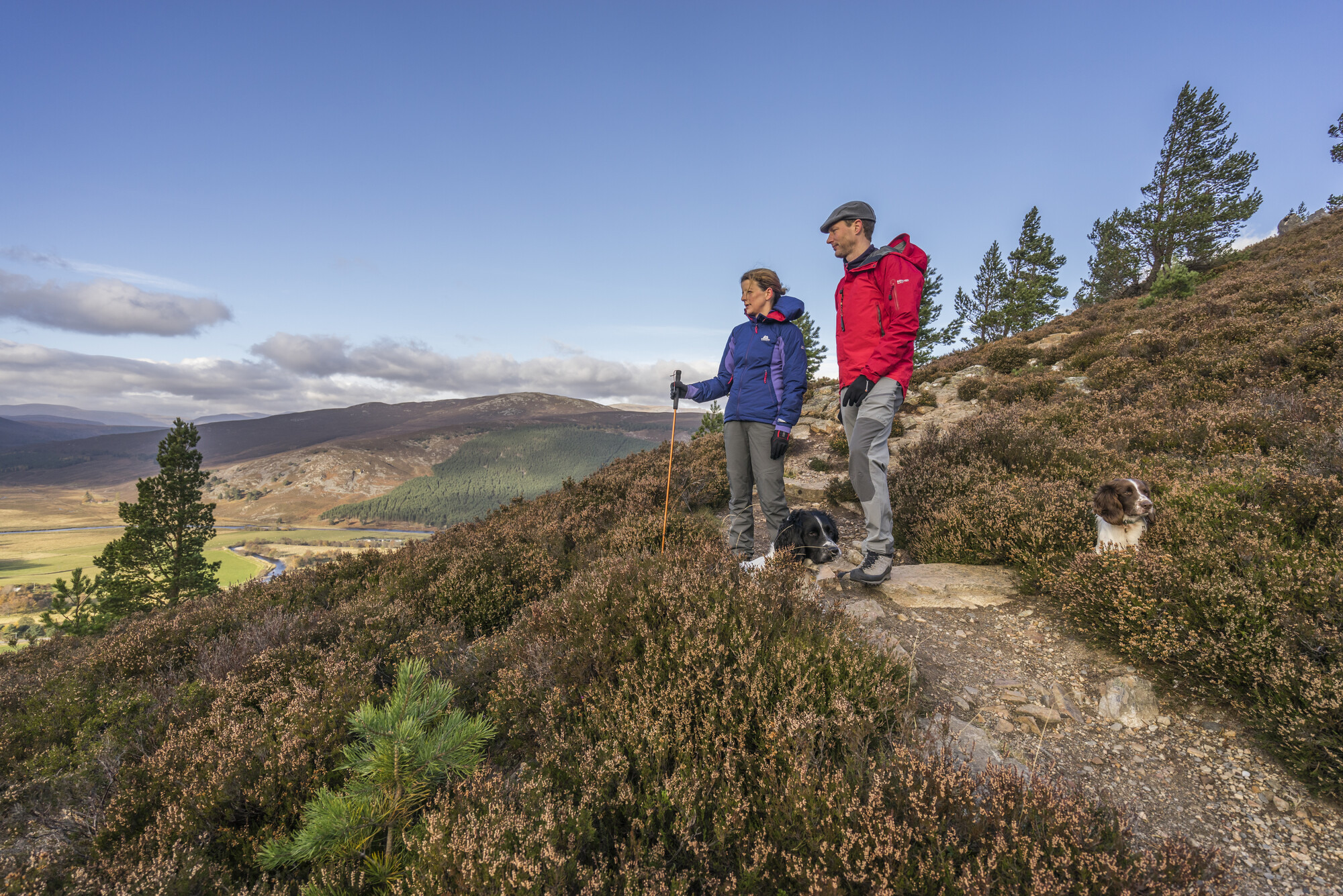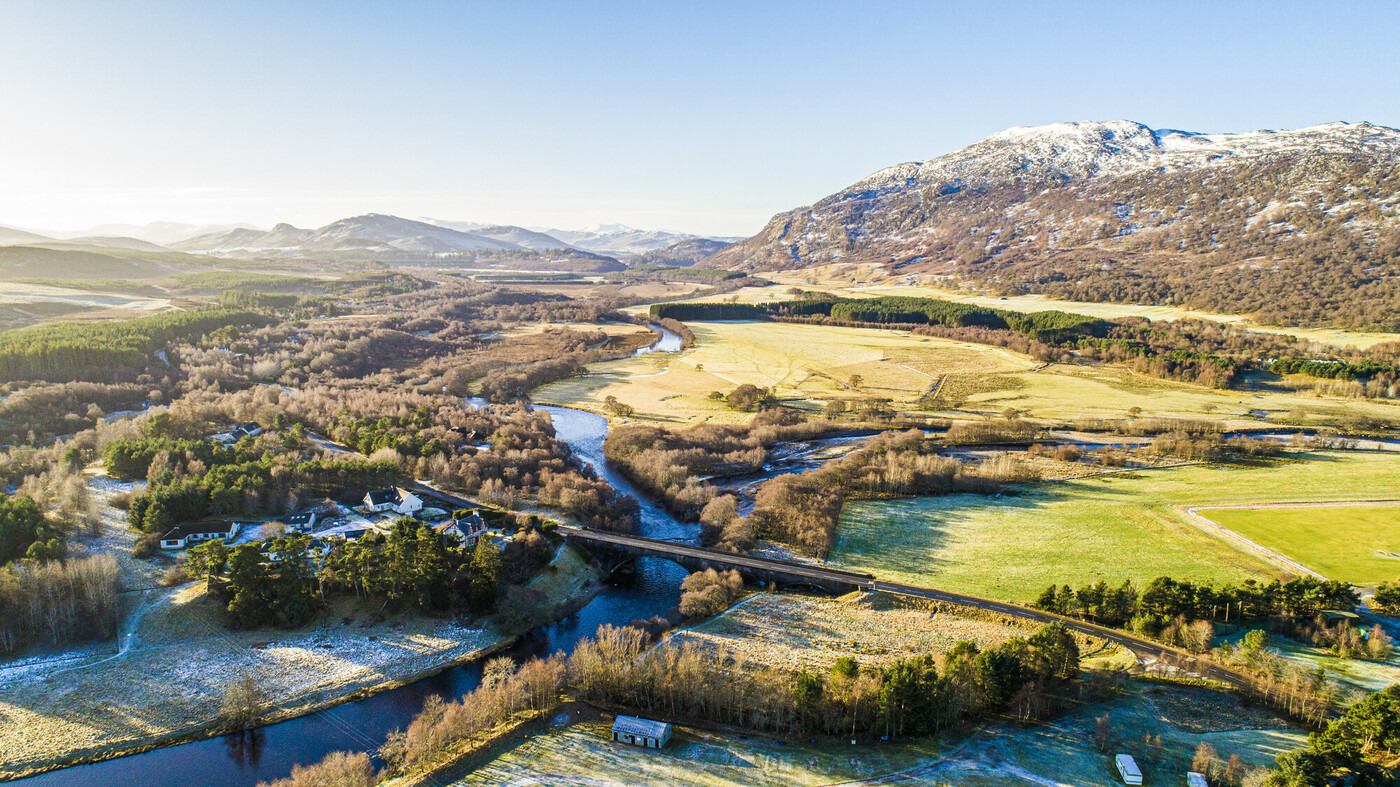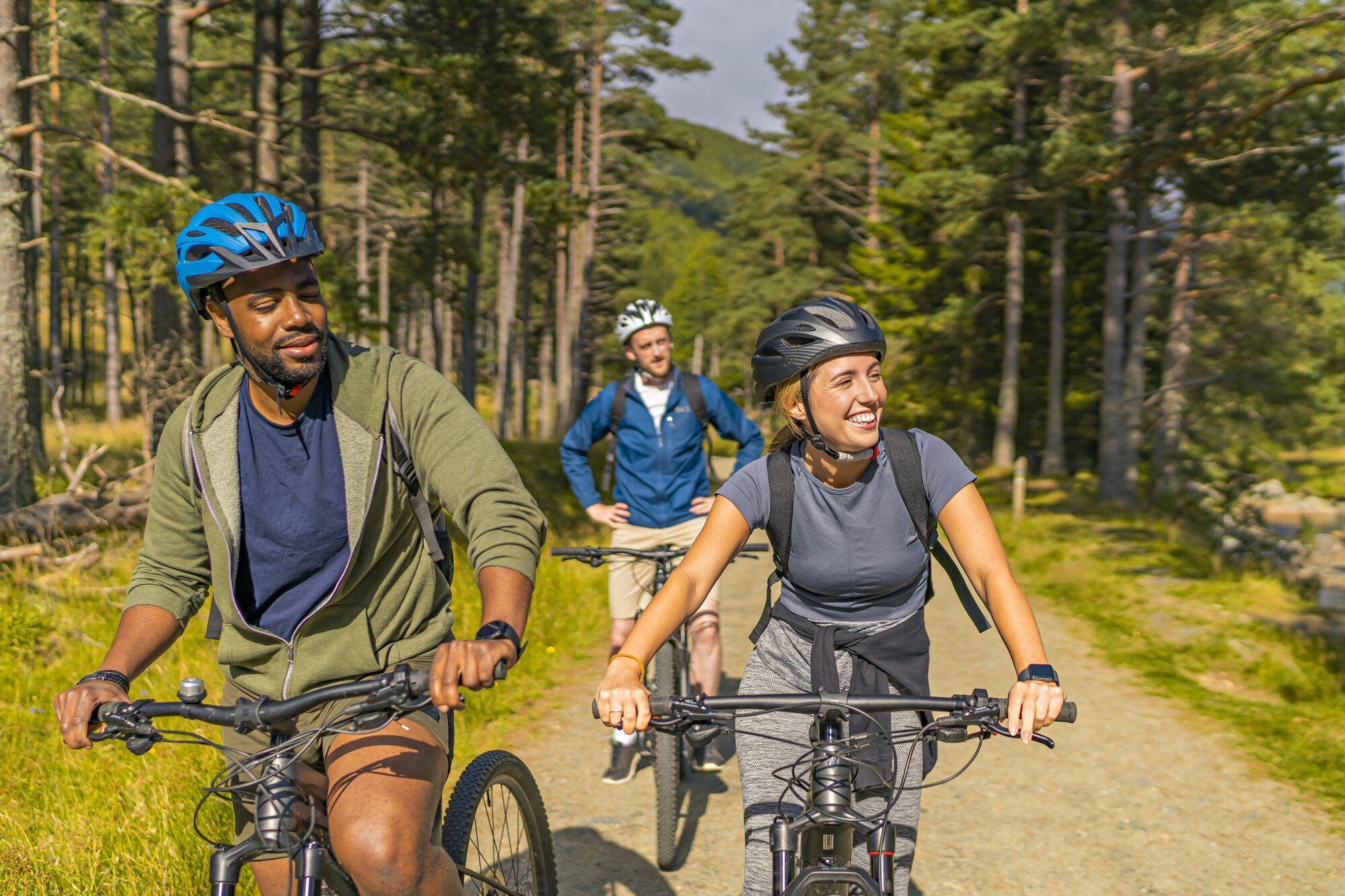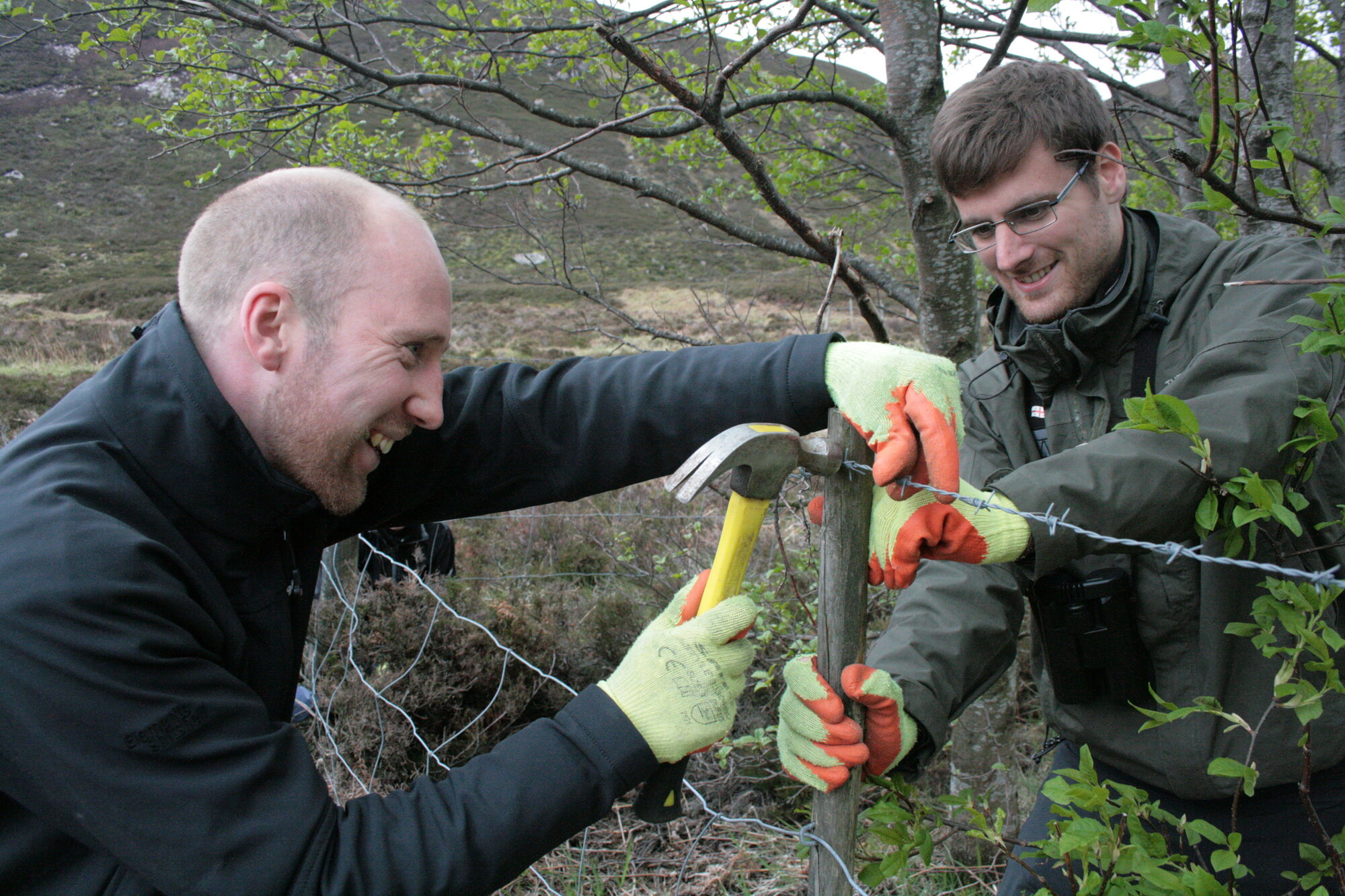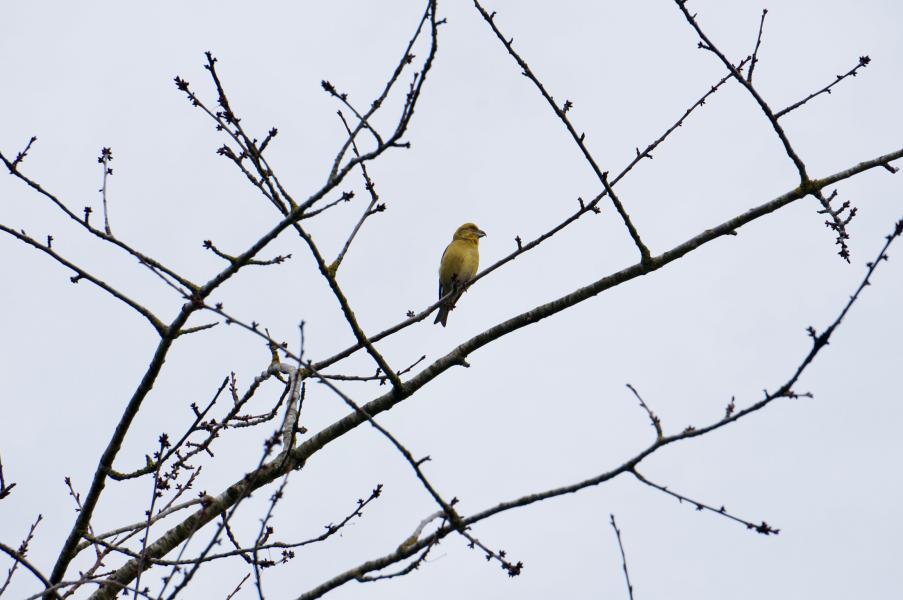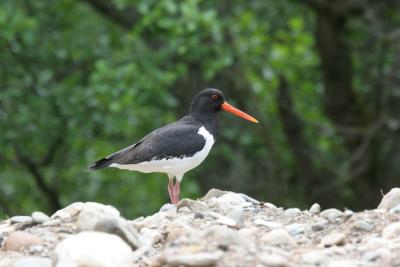Scottish crossbill
Loxia scotica
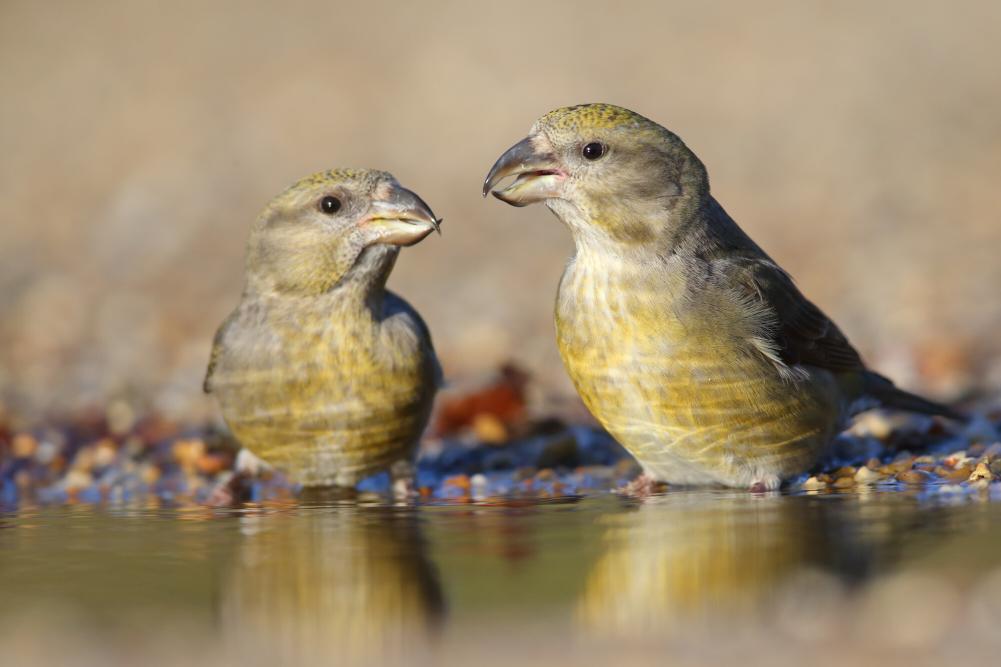
The Scottish crossbill is one of the UK’s two endemic bird species, meaning you’ll find it nowhere else in the world. It breeds in forests in the Scottish Highlands - preferring Scots pine - and is not known to migrate.
Factsheet
Weight: 44g
Lifespan: Two years
Best time to spot: January to December
The Scottish crossbill is one of the larger members of the finch family. It has a thickset head and sizable brown / black crossed mandibles (bill): the perfect tool for snapping up seeds from Scots pine trees.
You’ll most likely spot Scottish crossbills in coniferous woodlands (predominantly pine), where they live and mate in winter. Look up, and you might see small flocks gathering around ripening cones.
Their plumage varies depending on the sex and age of the bird. Males are typically burnt orange or russet in colour with dark brown wings and tails, while females assume more of a yellow / green hue. Juveniles have yet to grow into their vibrant feathers, so they have a greyish appearance.
To human ears, the Scottish crossbill’s call resembles ‘jip jip jip’. Researchers use sonograms to examine these sounds. For many years, it was thought that Scottish crossbills had a unique excitement call that differentiated them from common and parrot crossbills. Further research has dispelled this theory. Combined with the strong physical resemblances between the three species, this makes the Scottish crossbill very hard to identify.
Did you know?
The Scottish crossbill is one of the UK’s two endemic bird species, meaning you’ll find it nowhere else in the world. It breeds in forests in the Scottish Highlands - preferring Scots pine - and is not known to migrate.
Factsheet
Weight: 44g
Lifespan: Two years
Best time to spot: January to December
The Scottish crossbill is one of the larger members of the finch family. It has a thickset head and sizable brown / black crossed mandibles (bill): the perfect tool for snapping up seeds from Scots pine trees.
You’ll most likely spot Scottish crossbills in coniferous woodlands (predominantly pine), where they live and mate in winter. Look up, and you might see small flocks gathering around ripening cones.
Their plumage varies depending on the sex and age of the bird. Males are typically burnt orange or russet in colour with dark brown wings and tails, while females assume more of a yellow / green hue. Juveniles have yet to grow into their vibrant feathers, so they have a greyish appearance.
To human ears, the Scottish crossbill’s call resembles ‘jip jip jip’. Researchers use sonograms to examine these sounds. For many years, it was thought that Scottish crossbills had a unique excitement call that differentiated them from common and parrot crossbills. Further research has dispelled this theory. Combined with the strong physical resemblances between the three species, this makes the Scottish crossbill very hard to identify.
Did you know?
While Scottish crossbills reside in Caledonian forests year-round, they are an irruptive species. This means that they move to new locations when food stores are low, ie during seasons of low seed production.
Mostly, Scottish crossbills nest in Scots pine, but they are also known to nest in non-native conifers in forestry plantations. In the safety of branches, they build cup-shaped structures - made from twigs, moss and hair - in which to lay their eggs. Breeding begins early in the year, typically in March and April, but it’s not unusual for eggs to be laid in February.
For many years there was much debate about whether Scottish crossbills differed enough from the common and parrot crossbills to warrant being classified separately. Lengthy research by RSPB found that while the birds are genetically similar, Scottish crossbills have a unique size of bill.
Given the difficulty in distinguishing Scottish crossbills from other crossbill species, exact population numbers are difficult to pinpoint.
